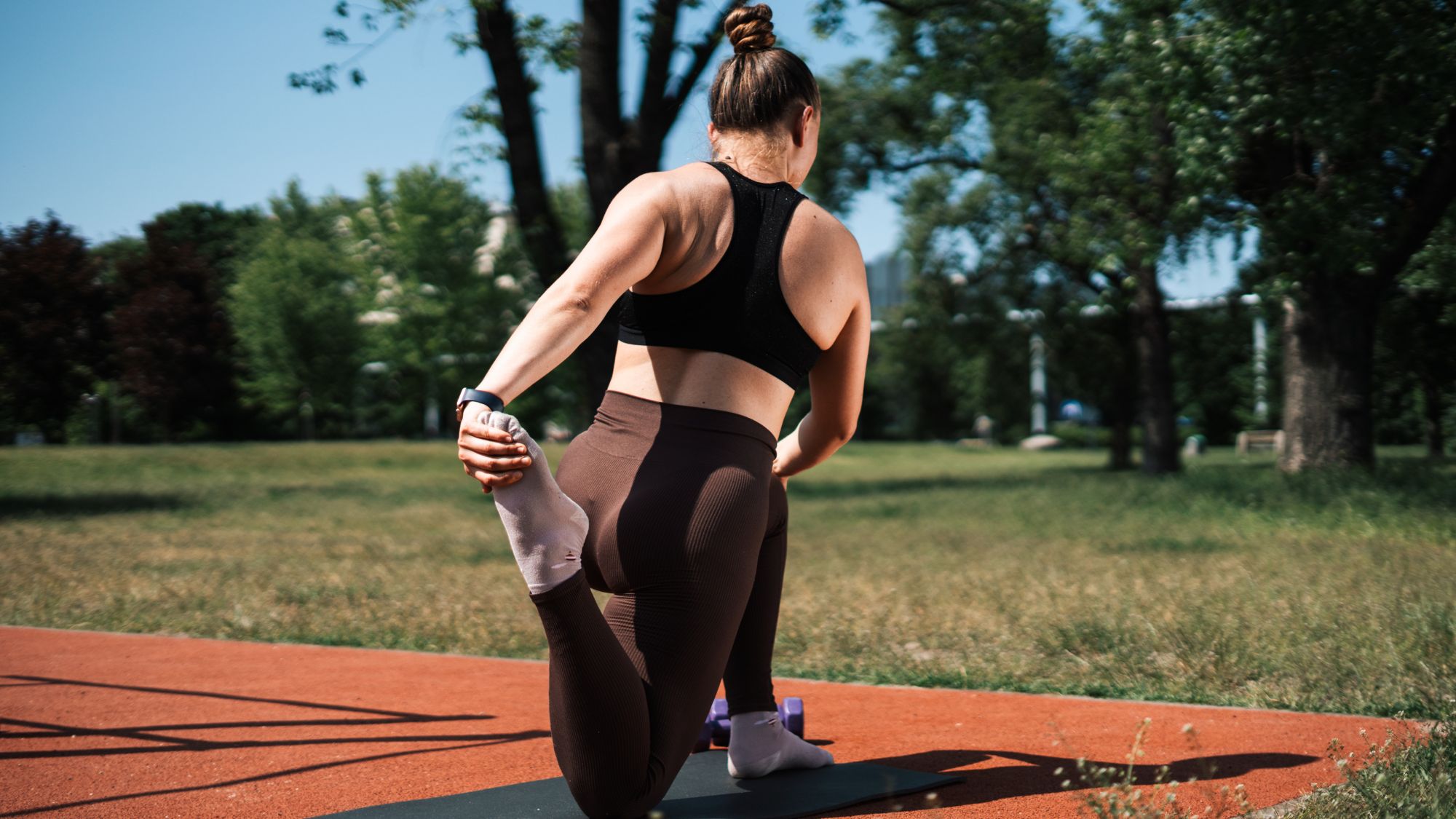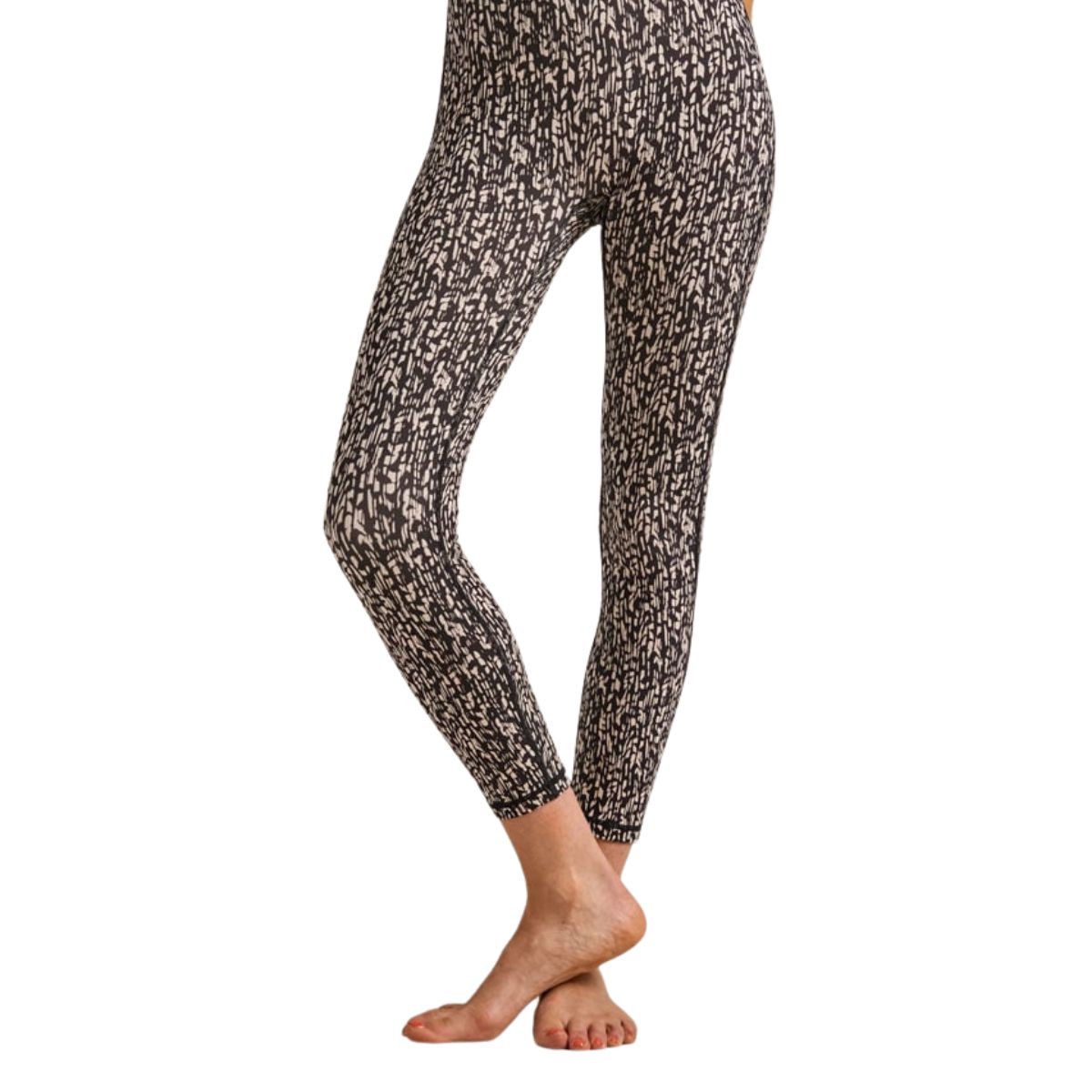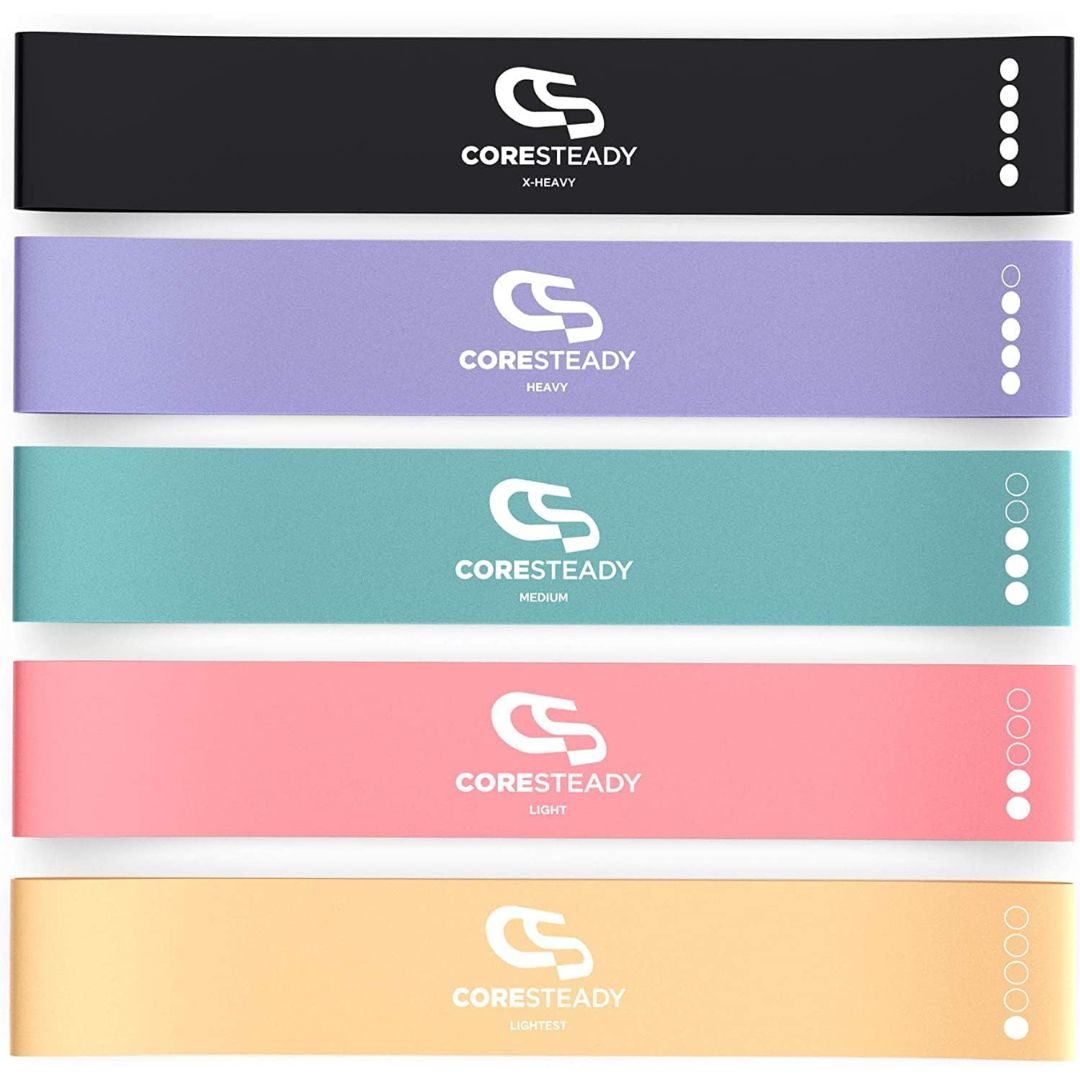Hip Flexor Strengthening Exercises Are Key to Mobile, Supple and Strong Hips - 6 Expert-Approved Moves
Ease tightness and tension with these bodyweight moves.


Hands up if you struggle with tight and achy hips? If your hand shot straight up, then, firstly, welcome to the (seemingly packed) club — and secondly, allow us to introduce you to the best hip flexor strengthening exercises, which can go a long way to boost mobility, power and stability in this area.
While the exact number of people experiencing hip tightness is hard to quantify, Google Trends shows that over the past 30 days, the term "hip flexor strengthening exercises" is at breakout, meaning there’s been a more than 5,000% increase in search interest within this time frame.
But how do you even get a serious case of tight hips in the first place? “Many people are spending more time sitting at desks or working from home, which can contribute to hip tightness and related issues,” confirms Juanita Jordan, consultant physiotherapist at Ten Health & Fitness. “At the same time, there’s been a general push toward improving physical health, and as more people return to exercise or take up new fitness routines, the hip flexors often come into focus,” Jordan adds.
According to Jordan, weak hip flexors are frequently linked to problems like lower back pain, hip and knee discomfort, and instability caused by muscular imbalances. Multiple studies, including this article, highlight just how important strong hip flexors are for maintaining good mobility as we age.
So, to help increase mobility, strength and power in this area, we racked the brains of experts to discover the best hip flexor strengthening exercises, the benefits of incorporating them into our routine and who they are best for (spoiler alert: it's everyone!).
Do keep scrolling to discover the top hip flexor strengthening moves to have on your radar. And for more strength and tension-releasing content, don't miss our guides on mobility training, including the best mobility exercises to ease full-body tightness and best stretching workouts you can do.
Top experts confirm: 5 best hip flexor strengthening exercises
What are hip flexor strengthening exercises?
“Hip flexor strengthening exercises are movements that target and engage the muscles at the front of the hip, helping to build strength, control, and resilience in that area,” explains Rowan Clift, training and nutrition specialist at fitness and lifestyle coaching app Freeletics.
Celebrity news, beauty, fashion advice, and fascinating features, delivered straight to your inbox!
Clift says these exercises typically involve lifting the thigh towards the torso or resisting extension at the hip joint. “Examples include standing knee raises, leg lifts, lunges with a high knee drive, and resisted band marches,” he says.
What are the benefits of incorporating weekly hip flexor strengthening exercises?
Throwing some hip flexor strengthening exercises into your weekly workout routine offers a range of physical benefits, particularly when it comes to postural control (AKA the ability to maintain stability and balance while on the move and stationary) and movement efficiency.
“It improves your posture and spinal alignment, particularly if you spend a lot of time sitting,” confirms Clift. “Strong hip flexors also enhance your ability to perform athletic movements such as sprinting, jumping, and kicking, making them crucial for sports and high-intensity workouts. They also support better balance and coordination, which becomes increasingly important as we age,” Clift adds.
Physio Jordan highlights that strong hip flexors can also help protect against overuse injuries and strain. “For example, when the hip flexors are weak or tight, the quadriceps and lower back muscles often compensate, leading to overuse and strain in those areas,” she says.
What does the current science say about hip flexor strengthening exercises?
nonspecificThere’s quite a lot of praise surrounding hip flexor strengthening exercises, tbh.
One 2023 review found that those suffering from non-specific low back pain saw significant improvements in pain and disability after completing hip strengthening exercises.
Researchers noted: “The inclusion of hip muscle strengthening exercises in an exercise protocol that involves the whole musculature or specifically targets the lower back provides significant improvements in the reduction of pain and disability in patients with lower back pain, without causing injury.”
A six-week 2015 controlled trial found that simple hip-flexor strength training using resistance bands "substantially improves" hip-flexor muscle strength, which researchers noted would be "promising" for future prevention and treatment of acute and longstanding hip-flexor injuries, such as acute rectus femoris injuries (a major muscle in the thigh) and longstanding iliopsoas-related pain and impingement (also known as snapping hip).
A 2021 article, published in The Journals of Gerontology, which compared the effects of reactive balance training, hip muscle strengthening, and their combination on balance performance, muscle strength, and prospective falls among older adults, found that these interventions could reduce future falls by 56% to 74%.
Who are hip flexor strengthening exercises best for?
Nobody needs to feel left out here, as hip flexor strengthening exercises are beneficial for virtually everyone, regardless of activity level.
“Whether you're highly active or spend most of your day sitting, your hip flexors play a key role in posture, stability, and movement,” Jordan confirms.
“Incorporating hip flexor work into a well-rounded full-body programme helps maintain strength, mobility, and control through the hips and core. This not only supports everyday movement but also helps prevent injury and improve overall athletic performance.”
That said, strengthening this region can specifically prove advantageous for:
- Anyone who sits for extended periods of time (we’re looking at you, desk workers). “For desk-based individuals, prolonged sitting can lead to tightness and weakness in the hip flexors, which may contribute to postural issues or discomfort in the lower back and hips,” Jordan explains.
- Those on their feet all day. “Whether that’s walking, standing, or exercising, these muscles are constantly being used and can become fatigued or imbalanced without targeted strengthening,” Jordan adds.
- Runners and gym-goers. “For runners and gym-goers, strong hip flexors contribute to more efficient stride mechanics and lower injury risk,” Clift says.
- Athletes who rely on explosive lower-body movements. “Such as footballers or martial artists,” Clift says. “They need powerful hip flexors for peak performance.”
- Older adults- Clift reiterates that maintaining hip strength is “critical” for balance, mobility, and fall prevention.
How many hip flexor strengthening exercises should I do a week?
So little time, so much to do — we know the deal. But you won’t have to cancel your plans or rearrange your whole workout schedule to fit in some hip flexor strengthening exercises. “For most people, performing hip flexor strengthening exercises two to three times per week is sufficient,” confirms Clift.
“This allows you to build strength and mobility without overtraining what can be a relatively small and sensitive muscle group,” the expert says. “Like all muscles, the hip flexors need adequate recovery time to repair and grow stronger, especially if they are tight or have been underused.”
That being said, Jordan says that it’s less about a specific number of hip flexor exercises per week and more about the variety and type of training you include in your routine.
“Ideally, your programme should incorporate at least one mobility exercise, one stability-focused movement, and one strengthening exercise targeting the hip flexors,” she says. “This well-rounded approach ensures you're not just building strength, but also improving control, flexibility, and functional movement."
How do I incorporate these exercises into a workout?
It’s a good question. Clift suggests that you include these exercises as part of your warm-up, core training, or mobility work, and Jordan agrees, stating: "Rather than isolating the hip flexors too frequently, it’s best to include them as part of a balanced, full-body training plan.”
5 of the best hip flexor strengthening exercises
1. Leg raise
What? “One of my favourite [hip flexor strengthening exercises] is the lying straight leg raise," Clift says. Lying flat on your back with one leg extended and the other bent, raise the extended leg to a 45-degree angle and slowly lower it,” Clift says.
Why? "This isolates the hip flexors without stressing the spine and is great for beginners," the expert says.
How long? Aim for two to three sets of ten to 12 reps.
2. High-knee march
What? “Another effective move is the high-knee march with resistance bands. Standing tall with a mini resistance band looped around your feet or ankles, drive one knee up at a time while maintaining a strong core,” Clift says.
Why? “This improves both hip flexor strength and balance," he notes.
How long? Perform two to three sets of 30 seconds per leg.
3. Mountain climbers
What? Often hailed as one of the most effective core exercises of all time, we like to think of the humble mountain climber move like running on the spot — but on all fours.
Why? “They engage the hip flexors dynamically while also challenging the core and cardiovascular system,” Clift says.
How long? Aim for three rounds of 20 to 30 seconds with good form.
4. Isometric hold
What? “This is a simple way to activate the hip flexors and build pelvic stability,” Jordan says.
Why? “Because it’s isometric (meaning the muscle contracts without changing length), it’s gentle on the joints and can be easily adapted to your current strength level. It’s also great for relieving discomfort and improving control," Jordan says.
How long? Hold for ten to 15 seconds, repeat three to five times per leg.
5. Bulgarian split squat
What? Jordan says the Bulgarian split squat exercise blends strength and mobility, working both the front and back legs.
Why? “By positioning the rear knee so it points down or slightly behind the hip, you can actively stretch the hip flexors while strengthening the glutes and quads, promoting balance across the hip joint,” Jordan says.
How long? Perform eight to ten reps per side, for two to three sets.
Shop Marie Claire UK's go-to hip strengthening kit:

Make your outfit match with these soft-as-can-be crossover leggings, which offer up the perfect blend of stretch and support. Whether you're completing your hip strengthening exercises as part of a warm-up, core training, or while doing yoga for strength, these leggings won't let you down.
What are the symptoms of weak hip flexors?
Weak hip flexors can present in several ways. According to Clift, one of the most common signs is tightness or discomfort in the front of the hips, especially after long periods of sitting. “You might also experience lower back pain, as the body compensates for poor hip stability by overworking the lumbar spine,” he says.
Reduced range of motion when lifting your knees or difficulties in maintaining balance and posture are also tell-tale signs of weak hips.
“In more active individuals, weak hip flexors can lead to poor running mechanics, slower sprint times, and increased risk of groin or hamstring injuries,” Clift says. “If you find it difficult to hold a high knee position or notice instability during single-leg movements, it may be time to assess and strengthen your hip flexors.”

Rebecca, or Becks, is a freelance journalist with more than ten years of experience in the industry. She specialises in all things health and lifestyle and has written for a number of brands including Women's Health, Stylist, the Evening Standard, Good Housekeeping, The Telegraph, Live Science, Tom's Guide and Fit&Well. Becks also writes copy for a number of brands and small businesses.
When she's not weight training, tracking down the best gym leggings, reading a book or at her desk typing away, you'll find her in the kitchen perfecting a new recipe or bake.






